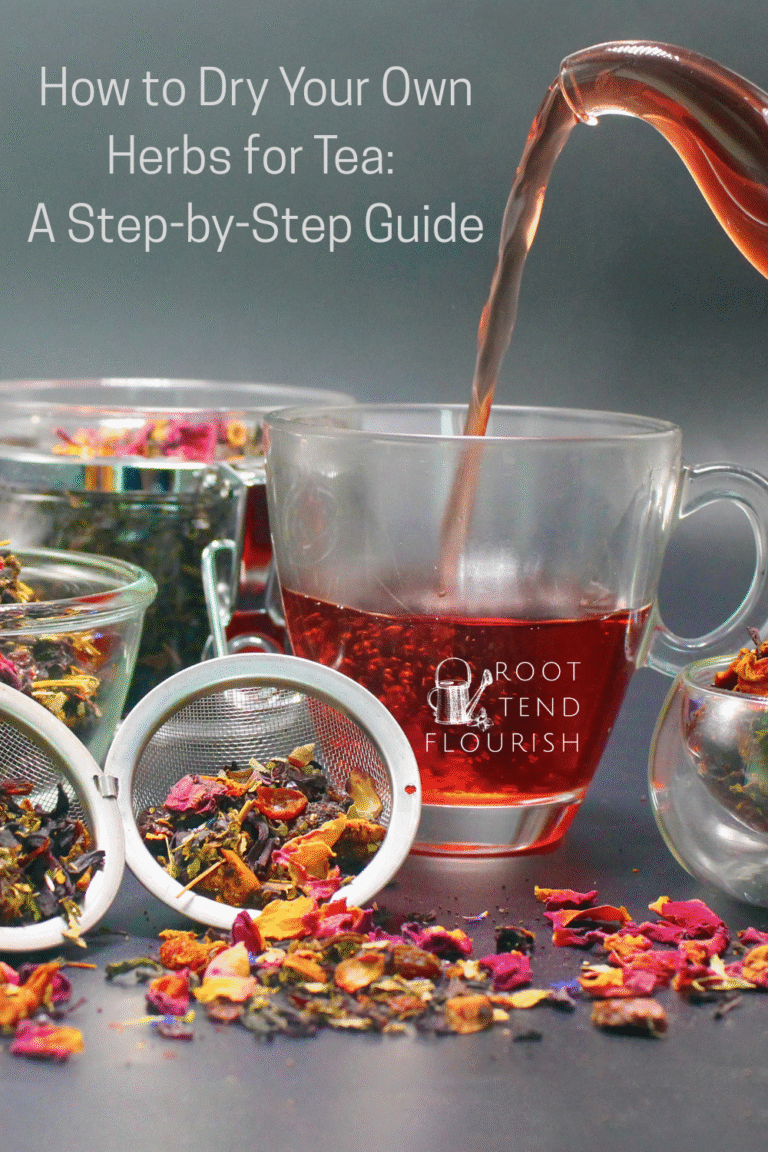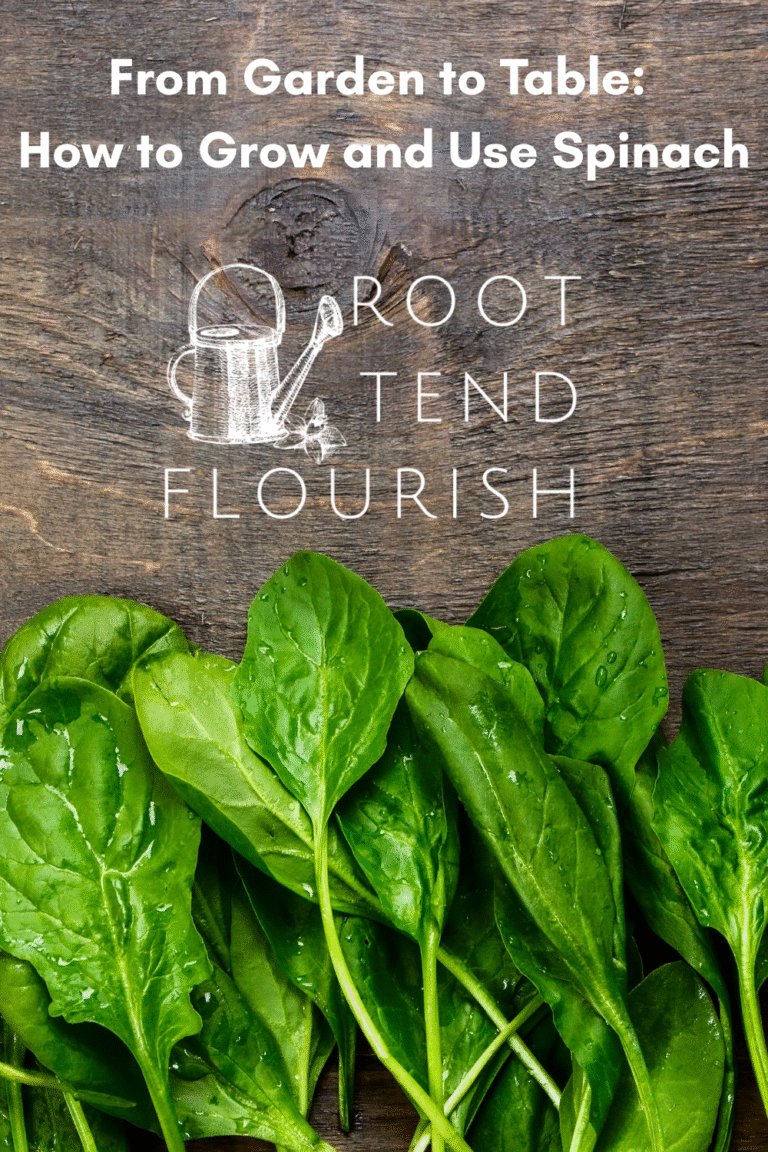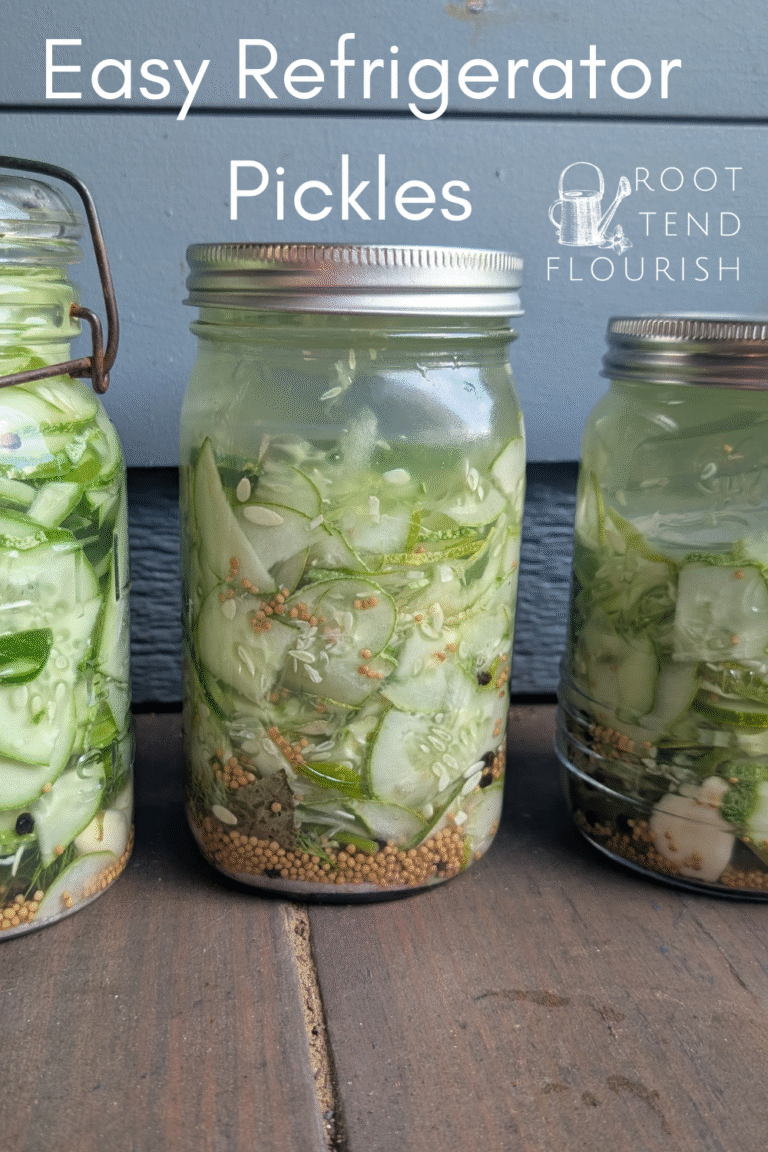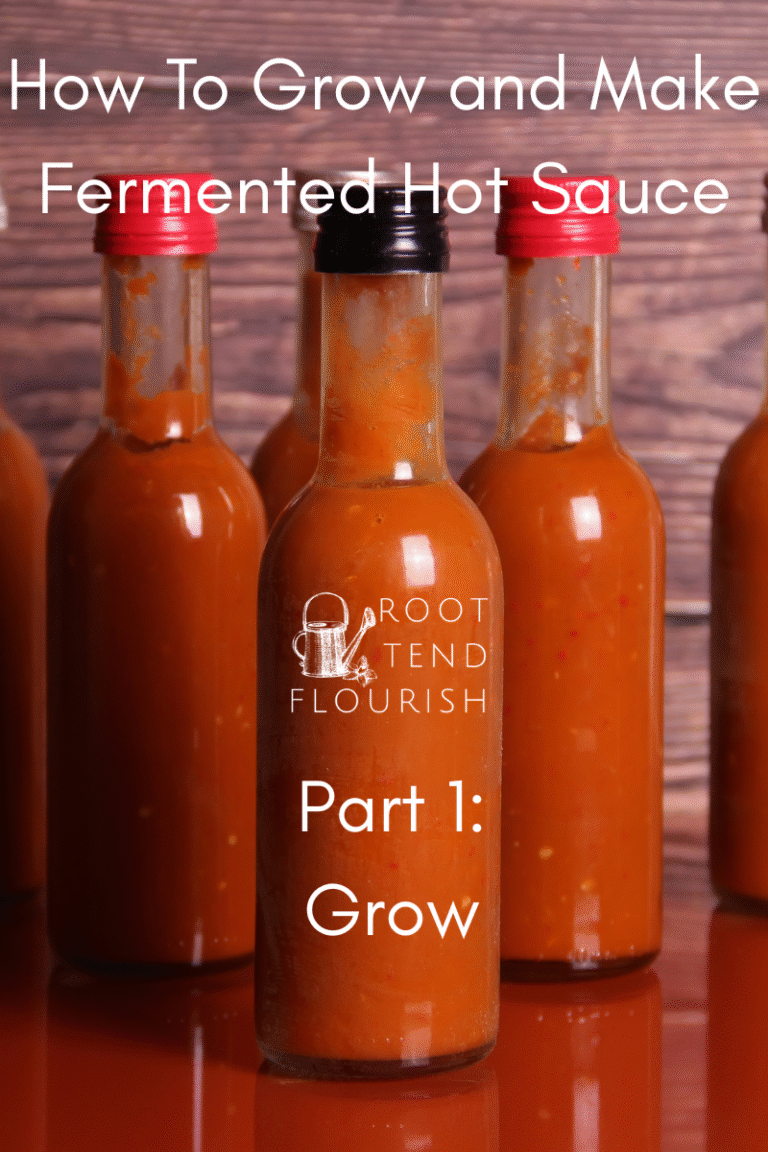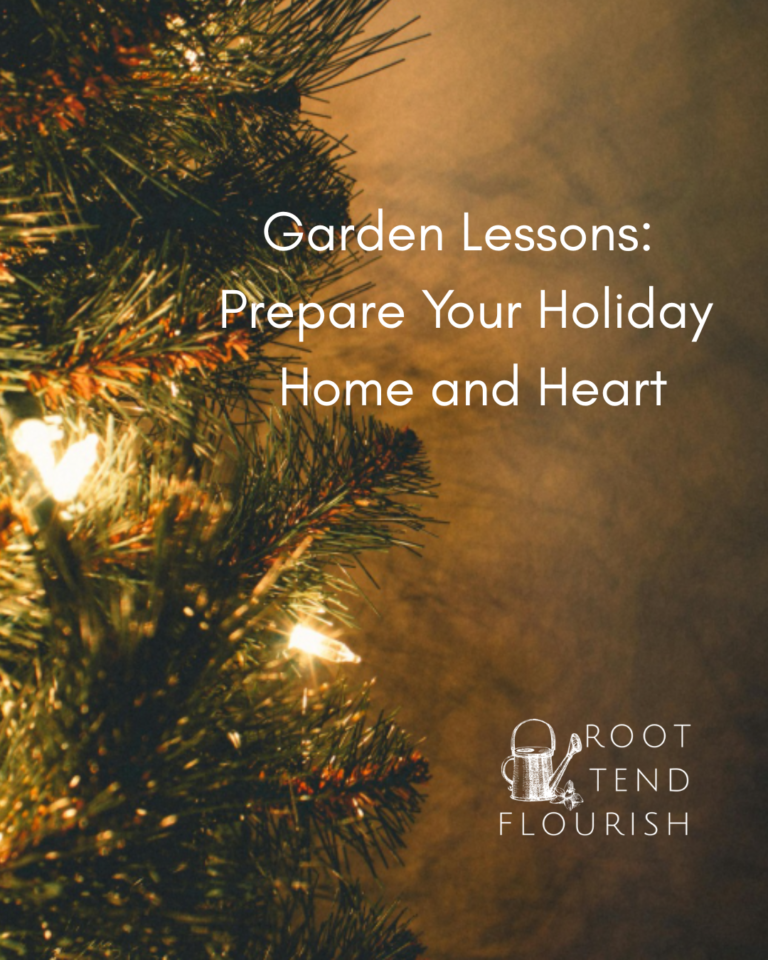How to Make Fermented Hot Sauce (Part 2)
Welcome back to our post on how to make fermented hot sauce. This is part 2 of my posts here at Root Tend Flourish. If you missed last week’s post, you can find it here. This week we are going to dive into what to do at the end of the growing season!
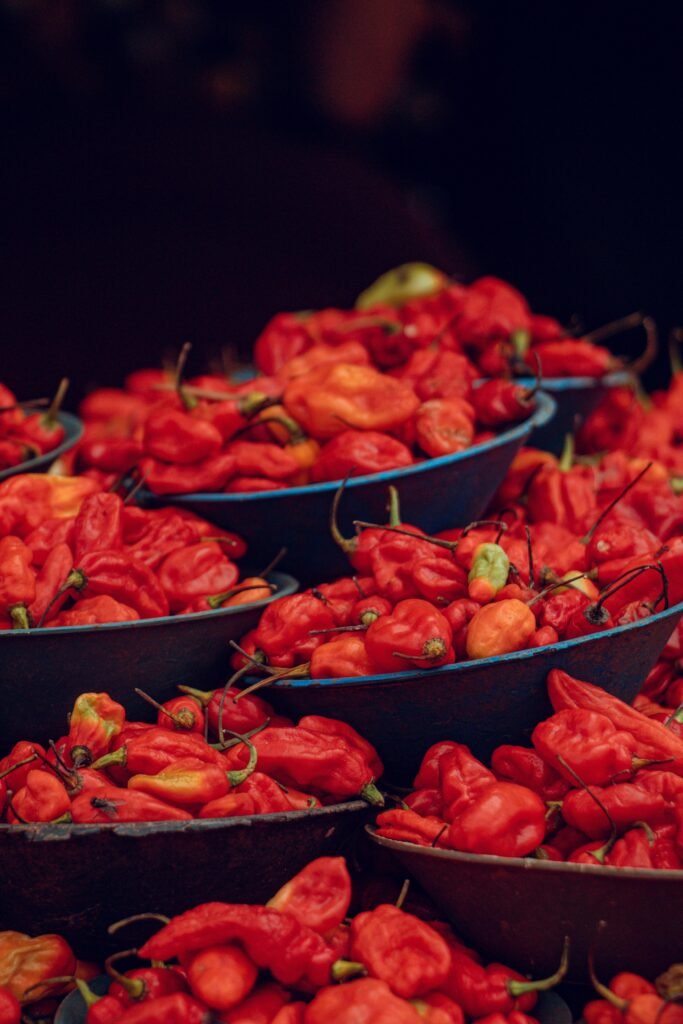
Harvesting Hot Sauce Peppers
When it comes to harvesting hot sauce peppers you want to do it at the right time. When you pick them at the right time you’ll get peppers that are full of flavor, the ideal spice profile and even proper firmness. Most peppers start off green and gradually change to their final color—red, yellow, or orange, depending on the pepper you choose. The shift in color will be an indicator of ripeness, as well as changes in taste and heat level. (Don’t forgot to not touch your eyes)
One of the peppers I have been able to grow the most is jalapeños, and the first time I grew them I saw that they developed small white marks (which in preparing to write this post I learned is called corking, who knew! These white marks signal they are ready to be picked.
Overall peppers should also be firm and full-sized when they are ready to be harvested. If they feel soft or wrinkled, they may be beyond ripe.
You might be thinking, “That’s great Mike but how long do they take to grow already?” Most pepper varieties take between 70-150 days. Generally, it will be less than 5 months for most peppers to reach full maturity. If picked early, peppers tend to be milder and slightly less sweet. If you are like me though and are looking for them to be the spiciest, make sure you wait until they are fully grown.
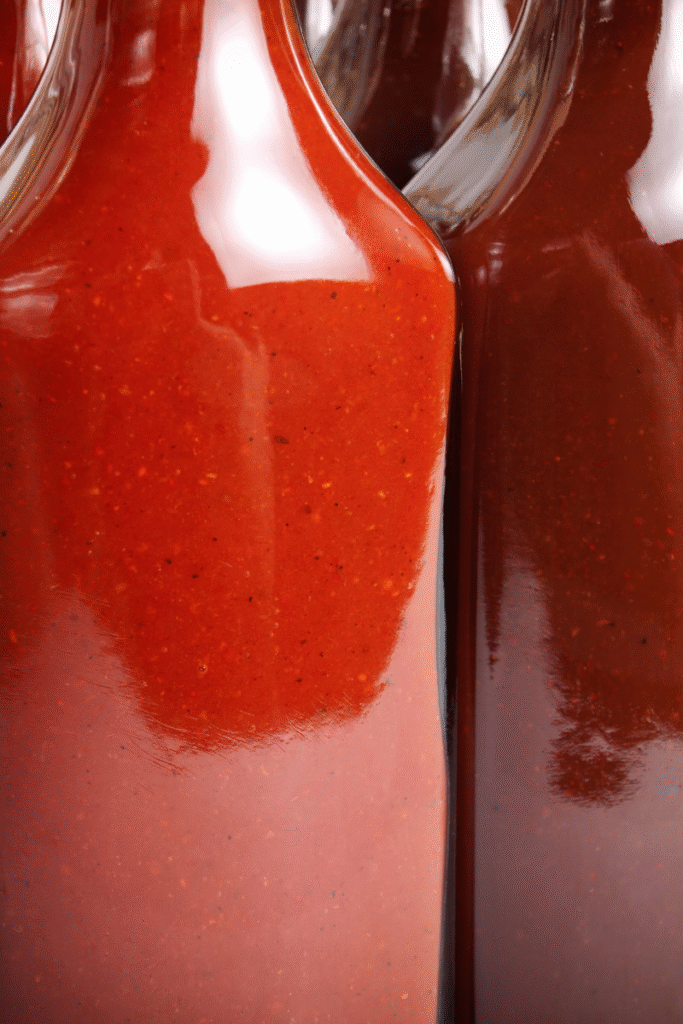
Then it’s time to make the hot sauce!!!!!
To wrap up these posts, I am going to leave you with my curated basic fermented hot sauce recipe. I love my probiotics, and this recipe is full of them. You’ll also notice there is no vinegar in this recipe, so it will need to be kept in the fridge. The longer it sits on the counter fermenting, the spicier it gets! (This is the first time I have written out these steps, please leave a comment below if you are not sure about something.)
Fermented Hot Sauce Recipe
This post may contain affiliate links. Please read our disclosure policy.
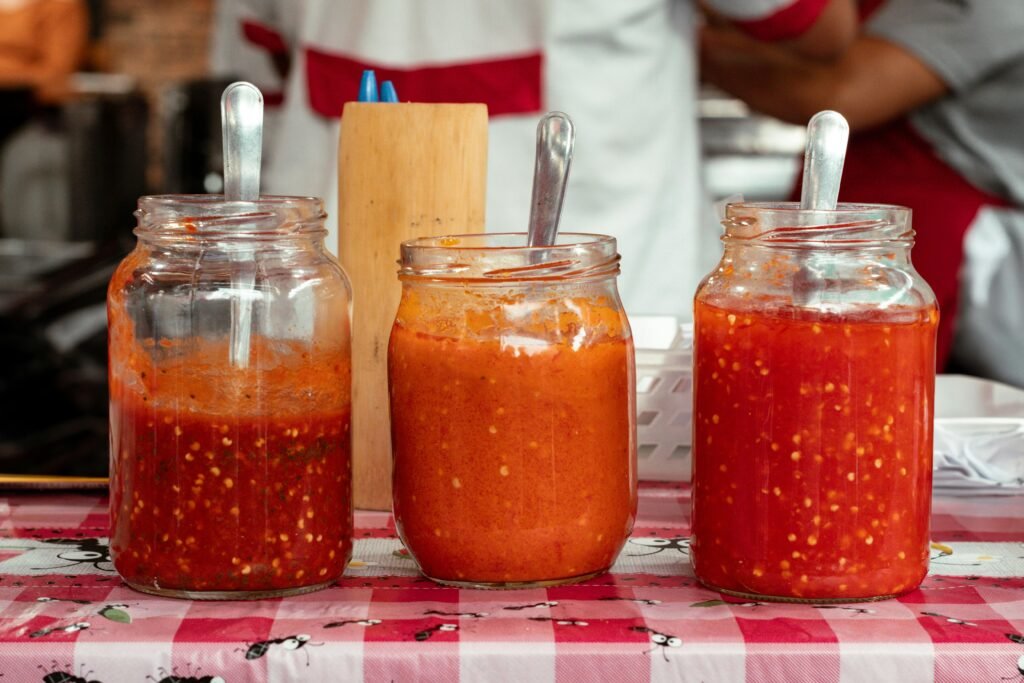
Ingredients:
- 7 cups chopped hot peppers (this is all your spicy peppers)
- 1 cup of chopped sweet peppers (to add balance)
- Around 1/4 cup sea salt
- Around 1 quart cool, un-chlorinated water
- Fresh cilantro (optional) – 1/3 to 1/2 cup, loosely packed
- One small onion
- 5-6 cloves of garlic
- 1 tbsp fresh-squeezed lime juice – this is for the end of the fermentation process to help add a special little zip
Tools
- Gloves
- Mason jars
- Wooden Large Muddler
- Fermentation air-lock lid
- Fermentation Weights
- Fine strainer (or cheese cloth) & bowl, used after fermentation
- Great blender
- Storage bottles
Fermented Hot Sauce Process
1. Pack It Up
Time to chop your peppers and onion, keeping the seeds if you want extra heat. Begin layering your mason jar by adding peppers first, followed by onions, cilantro, and garlic. Repeat the layering process until the jar is full, using a muddler to gently press down the ingredients to pack it tightly. Make sure to leave some space at the top to accommodate the weight that will be placed over the mixture.
2. Salt Water Brine
Maintain a ratio of 2 cups of water to 1 tablespoon of sea salt for the brine. Warming the water beforehand helps dissolve the salt more effectively, ensuring it fully integrates for proper fermentation. Allow the water to cool to room temperature before adding it to the mason jar. Once ready, pour the saltwater brine over the ingredients, making sure everything is completely submerged. This will prevent mold from forming and ensure a successful fermentation process. You’ll always want more brine than you’ll need because it takes time to make it!
3. Fermentation Time
During fermentation, gases build up inside the jar and need a way to escape. If you use an airlock, it will automatically release excess gas, preventing pressure buildup. Without one, you’ll need to “burp” the jars regularly to avoid a messy explosion. To “burp” the jars, you’ll open them up quickly and then close them just as fast. It can get quite gassy! By using an airlock, you ensure proper ventilation, and as long as all the ingredients remain fully submerged in the brine, your ferment will stay mold-free in a dark, room-temperature environment.
4. Bottling Time
The timing of when your ferment is ready ultimately depends on your preference. In most cases, you can start preparing to bottle once the peppers take on a dull color, signaling they have reached the minimum for a good ferment. If you’re after a richer, more complex flavor, let the fermentation process continue for at least three months to deepen the taste. However, if patience isn’t your strong suit, you can move on to the next step after about a week. Just know that the longer it sits, the bolder the flavor will become.
5. Strain and Blend and then you’ll have Hot Sauce
When you’re ready, strain the peppers from the liquid and transfer them to your blender. Be sure to save the brine because you’ll need it! Start by adding a small amount of brine to help blend the mixture smoothly. As you blend, gradually add more brine until you reach your desired thinness. This is also a great time to add some lime juice which will give your sauce a brightness to round out the flavors.
6. Bottle It Up!
You’ve made some incredible hot sauce and now it’s time to bottle it up. For storage, you can check out these awesome bottles, but mason jars and swing-top bottles work just as well. Swing-top bottles are great for convenience—I personally prefer them for beer when heading to parties or sharing with friends. You need to store the hot sauce in the fridge and if the top is tight then it can last over a year in the fridge, which means hot sauce all year long.
Hot Sauce!
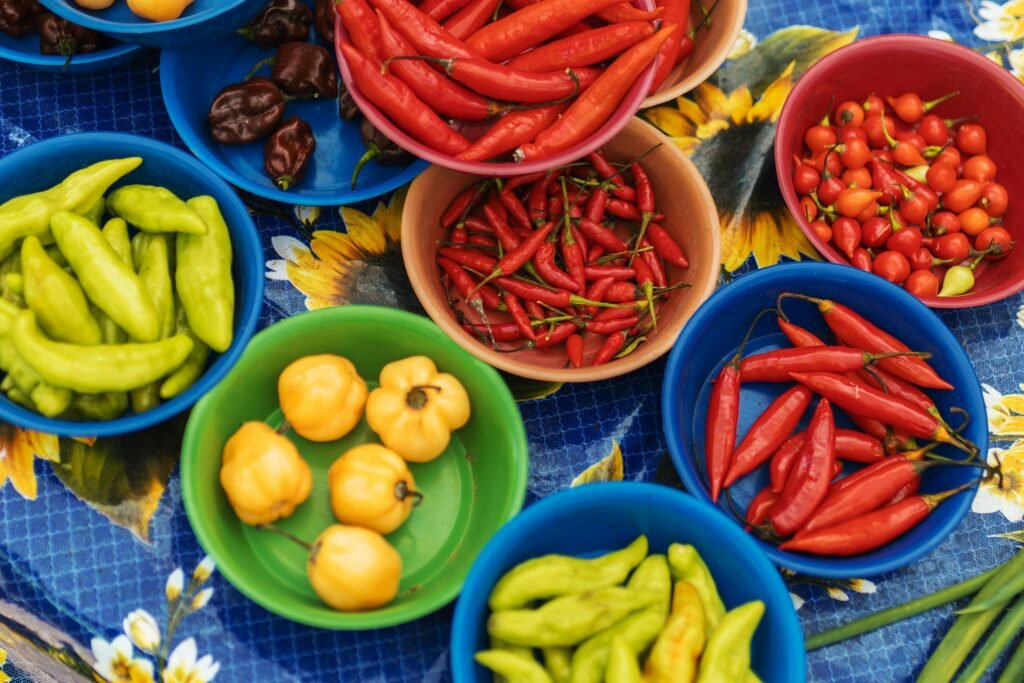
Now you have everything you need to make amazing hot sauce! You can prepare your garden for the peppers knowing that you have an easy, hands-off type recipe to use come harvest time. If growing your own peppers isn’t a good fit, check out local farmers markets. Often you can get all the ingredients you need to make the sauce!
Let us know when you make your sauce and how it came out. With the right care, these varieties will flourish in your garden, providing the perfect base for your bold and flavorful fermented hot sauces. Which ones are you planning to grow this season?

